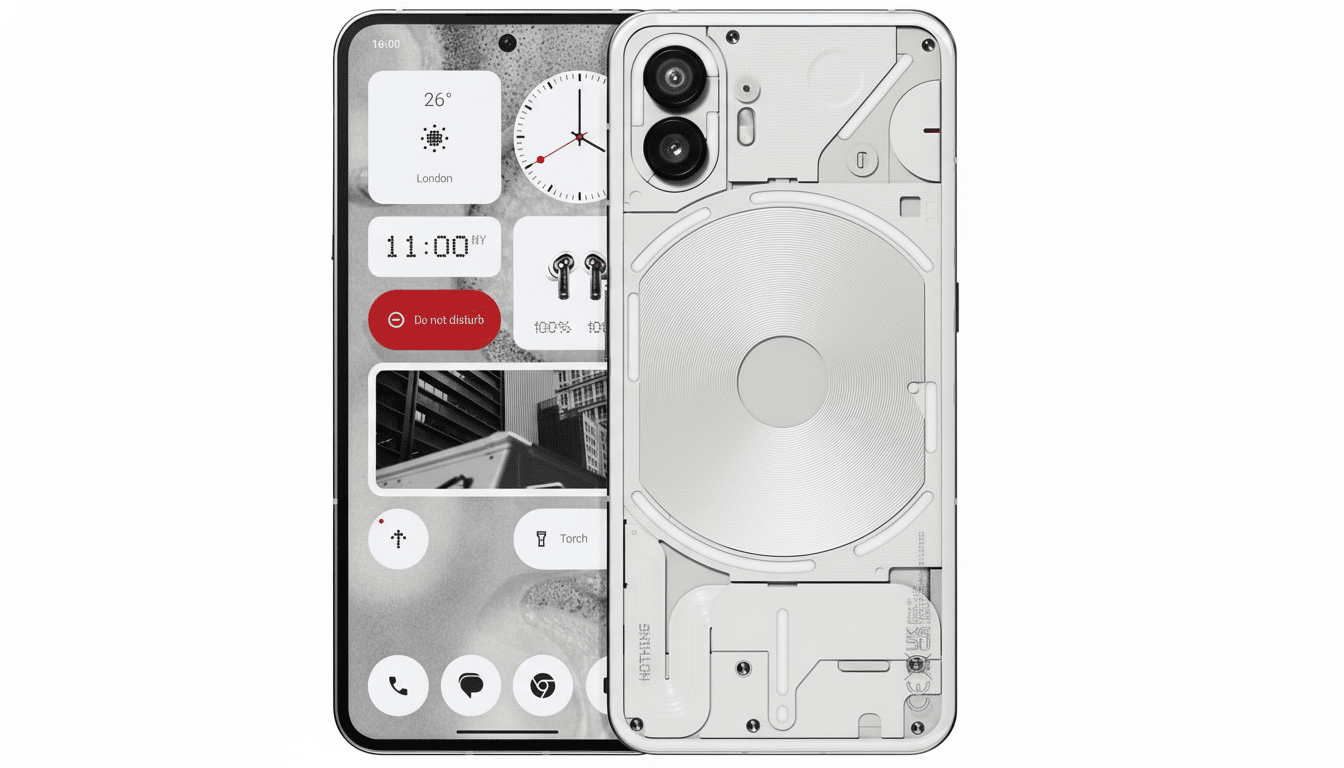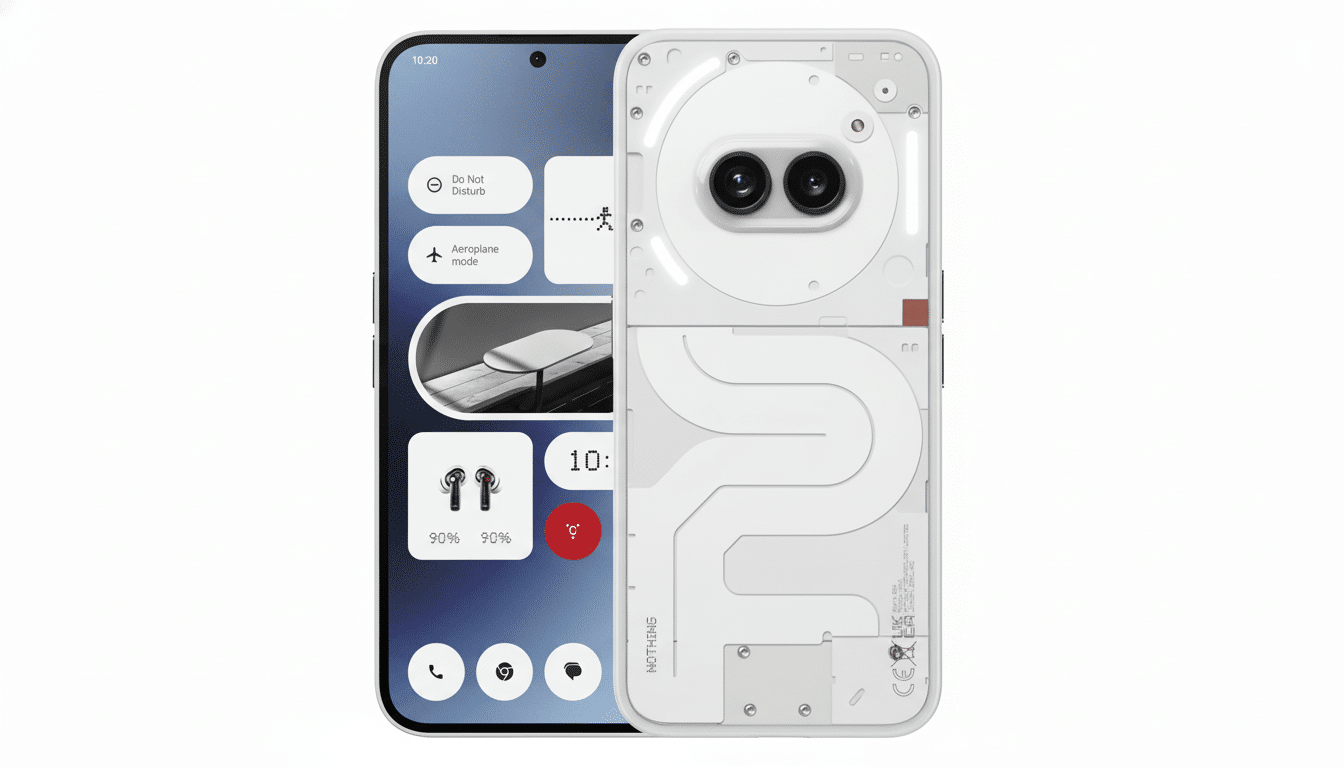Wireless charging is finally starting to be a thing that’s good for more people, with magnetic alignment systems making it easy to snap your phone down into the charging sweet spot.
But if you’ve ever thought to yourself, hey, why don’t more Android phones just add built-in magnets like Apple’s MagSafe? Nothing thinks it has the answer — and it points squarely at Apple’s intellectual property (as well as the cost of getting around it).

What Nothing Tells Us, And Why It Matters
In a behind-the-scenes video made for creator Mrwhosetheboss, one of Nothing’s content team gives it to us straight: “legal red tape” and “industry politics” have prevented makers of Android-powered phones from implementing magnet arrays capable of providing pinpoint-accurate wireless charging. Any other brand wishing to construct a fully compatible magnetic ecosystem without Apple’s blessing, the company says, is looking at an investment of seven figures potentially stretching towards eight before per-unit costs and compliance testing are even considered.
The practical impact is obvious. Instead of using magnets in the phone like on iPhones, most Android users just use cases with magnet rings that line up on pucks and stands. This adds bulk and breaks accessory compatibility, undoing the point of convenience that made MagSafe a hit in the first place.
The Patent and Standards Landscape for Magnetic Charging
Apple introduced the magnetic alignment idea with the iPhone 12 family, using a ring of magnets all around the wireless charging coil alongside an authentication layer for accessories. Elements of that approach are patented and linked with the company’s Made for iPhone program, which may help explain the cautious stance among competitors.
There’s also a standards wrinkle. Qi2 adds a Magnetic Power Profile informed by Apple’s submission, which promises improved alignment and efficiency along with multi-brand compatibility. On paper, that should cut back on legal friction for phone makers, since they can use a publicly available standard rather than guessing at Apple’s specific magnet geometry or accessory protocols.
But the journey from standard to shipping product is not automatic. Even with a standard spec, manufacturers must redesign chassis internals, ensure magnets don’t interfere with NFC or antennas, pass electromagnetic compatibility (EMC) tests and validate thermal behavior on certified chargers. None of that is free — and none of it directly makes for painless coexistence with Apple’s proprietary features, such as accessory authentication.
Why Android Phones Seldom Come With Magnets
Legal exposure aside, there are sober engineering trade-offs. Magnet rings consume valuable real estate around the coil, requiring product design changes for battery placement, camera islands or vapor chambers. Powerful magnets will degauss magnetic stripe cards or pull on metallic items in pockets, leading to more rigorous safety and accessory testing. Margins matter, and when your in-house data suggests most owners just aren’t using wireless charging on a daily basis, the business case is tough to justify.

Android brands have offered experiments at arm’s length. One brand also showcased a MagSafe-esque system it calls MagDart alongside a concept phone that never made its way to stores. A number of companies also sell cases that can retrofit popular models with magnet rings. Some niche devices have played with built-in magnets, but none approach the size or accessory depth that Apple does.
Meanwhile, accessory makers have conditioned consumers to expect MagSafe-like convenience. Companies like Belkin and Anker have created popular rosters of snap-on chargers, stands and battery packs. That ecosystem gravity puts pressure on Android OEMs to take a similarly compatible approach — but it also increases the stakes if they screw up the implementation.
Qi2 Could Change the Equation for Android Charging
The certification of Qi2 offers Android makers a cleaner path: adopt the Magnetic Power Profile, commit to baseline interoperability and access a growing pool of chargers built to this aligned-charging specification.
More than a billion Qi-certified devices have been shipped over the life of the standard, according to the Wireless Power Consortium, which says that by making alignment predictable across brands, Qi2 will speed additional accessory growth.
If so, the calculation around magnets changes. It also means less legal risk around magnets, less internal design work rendered useless between phone generations and accessory partners that can commit to a single ecosystem rather than hedging with stickers, rings and bespoke cases. Users also experience quicker and more consistent wireless charging without the need to search for a sweet spot.
The Bottom Line on Magnets, Apple, and Qi2 Adoption
Nothing’s finger-pointing at Apple points to a real tension: the boundary between open standards and proprietary advantage. Apple’s IP created the initial magnet ecosystem that worked well inside its walls and poorly outside them. Qi2 provides an off-ramp, but adopting it takes time, engineering dollars and faith that customers will really use the feature.
For buyers, the bottom line is quite simple. If magnetic alignment is important for you here and now, then you’ll indeed require an iPhone-class solution (or a case with a magnet ring on Android). If you’re willing to hang on, new models of Android devices are starting to tout Qi2 compatibility with magnets and should be certified by the Wireless Power Consortium. The dream is a world in which snap-to-charge embedded charging just works, no matter what the logo on the back.

